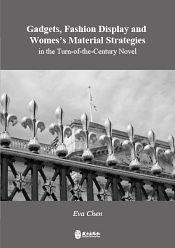內容簡介
內容簡介 This book examines aspects of late Victorian and early twentieth-century material culture as represented in s-e-l-e-c-t-e-d literary texts, particularly the areas of technological products and material fashion. It utilizes the insights of material culture studies and the renewed emphasis on objects and things, to argue that Victorian literature, traditionally seen as prioritizing characters and the human subject, also serves to highlight the indelibly linked and mutually structuring enabling relationship between the material and the human. Studies on Victorian material culture have largely prioritized the mid-Victorian novel and canonical writers, but the late nineteenth and early twentieth century scene is also important, particularly in view of the acceleration of commodity culture and the expansion of technology from the industrial floor to key facets of personal life including communications and mobility. This period is also noteworthy because of the much enhanced role of women and their increasing prominence in the public space of commodity culture. In these new developments, the experience of women as new participants and users constitutes an inalienable part of turn-of-the-century material culture, and this book hopes to shed fresh light on this important, newly emerging topic.
產品目錄
產品目錄 Acknowledgements1 Introduction2 Women, Labor and Technology in the Late Victorian Age: Typewriting in George Gissing and Grant Allen3 “Its Prohibitive Cost:” The Bicycle, the New Woman and Conspicuous Display4 The Department Store: Fantasy or Reality?5 “Rather Above Her Station:” Dress and Mass Fashion in George Gissing’s In the Year of JubileeAfterwordWorks CitedIndex
